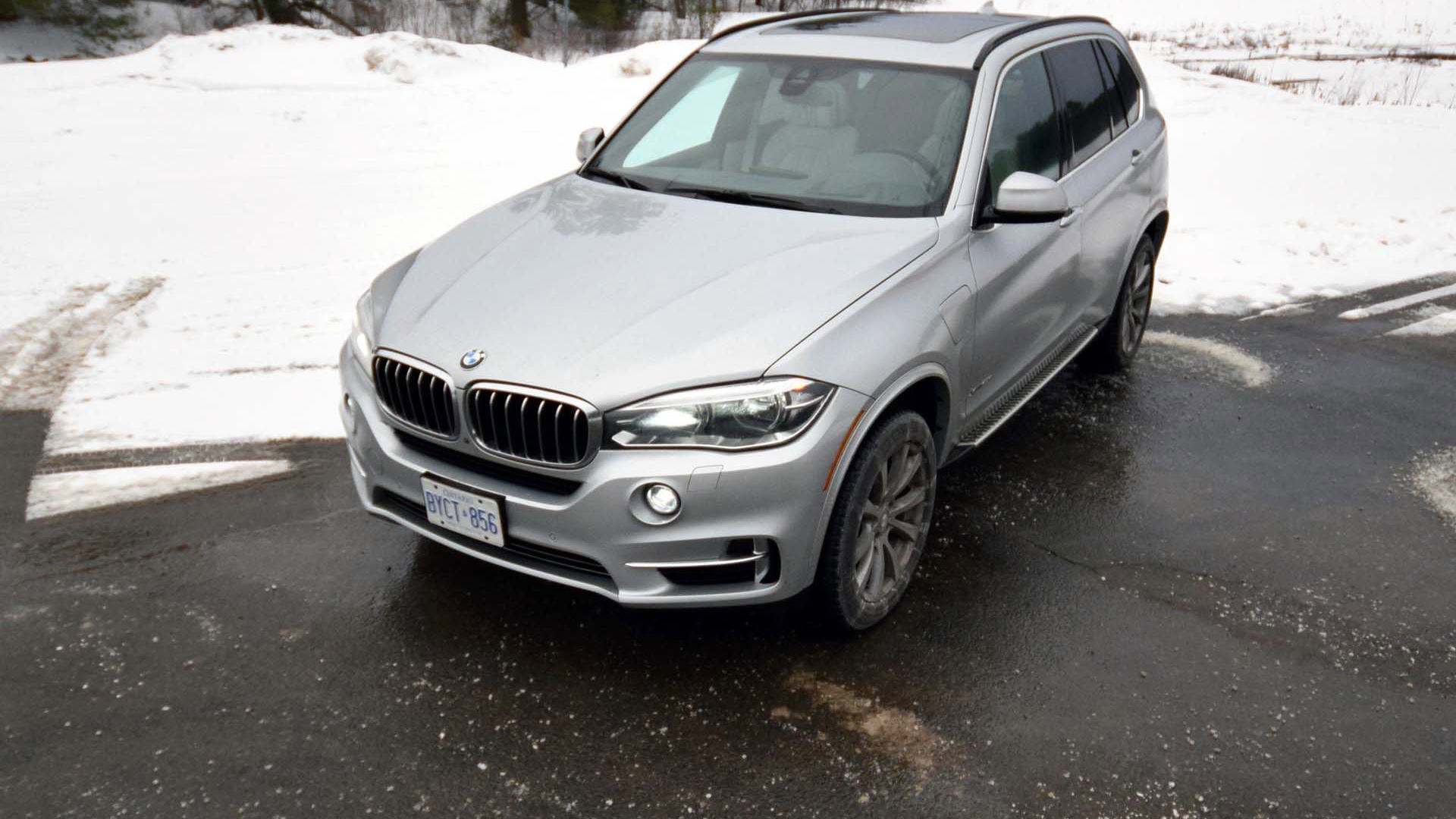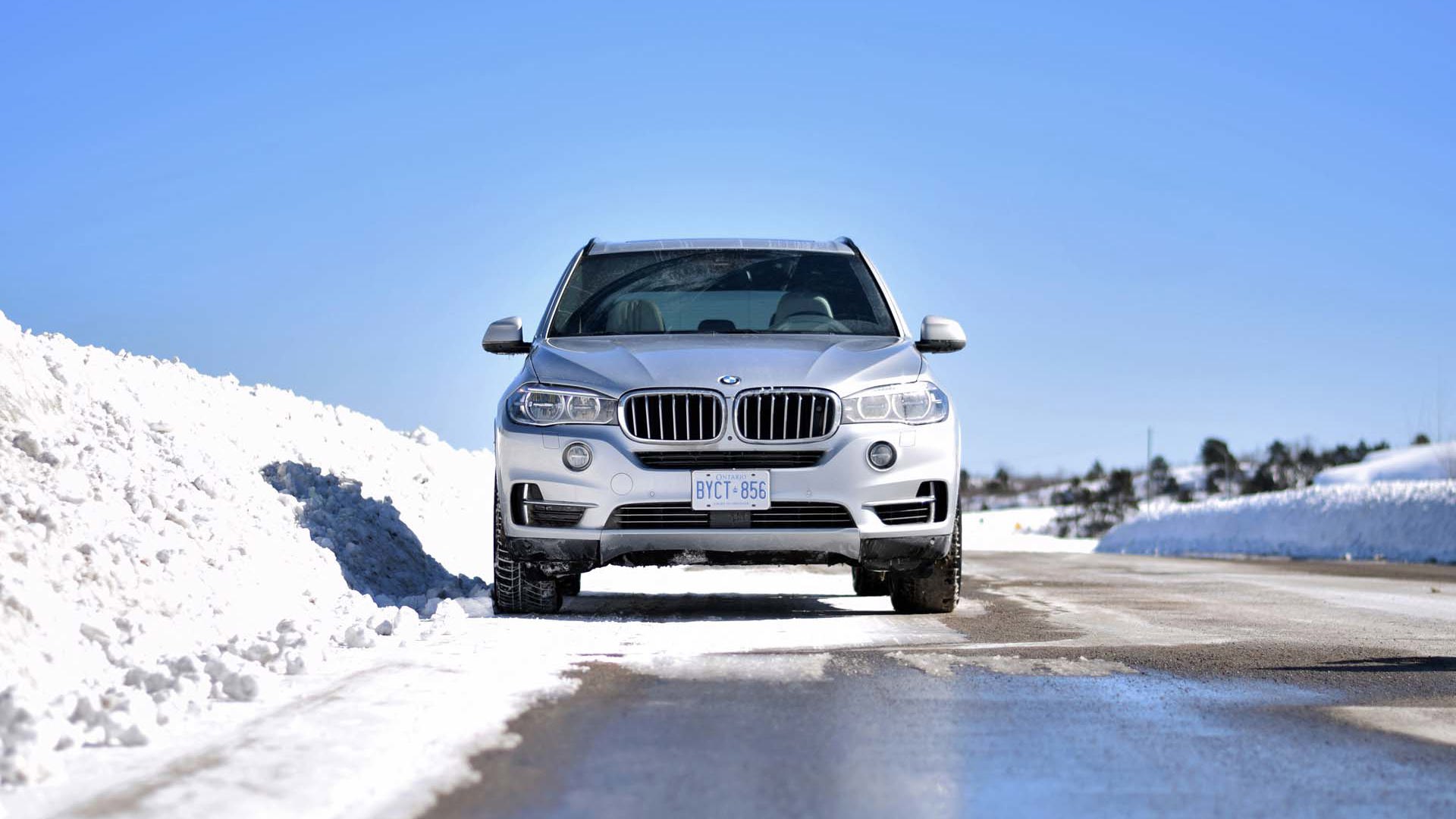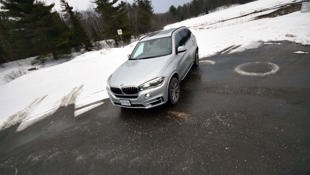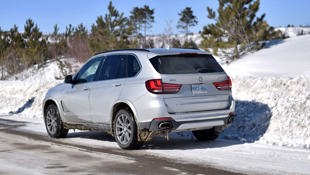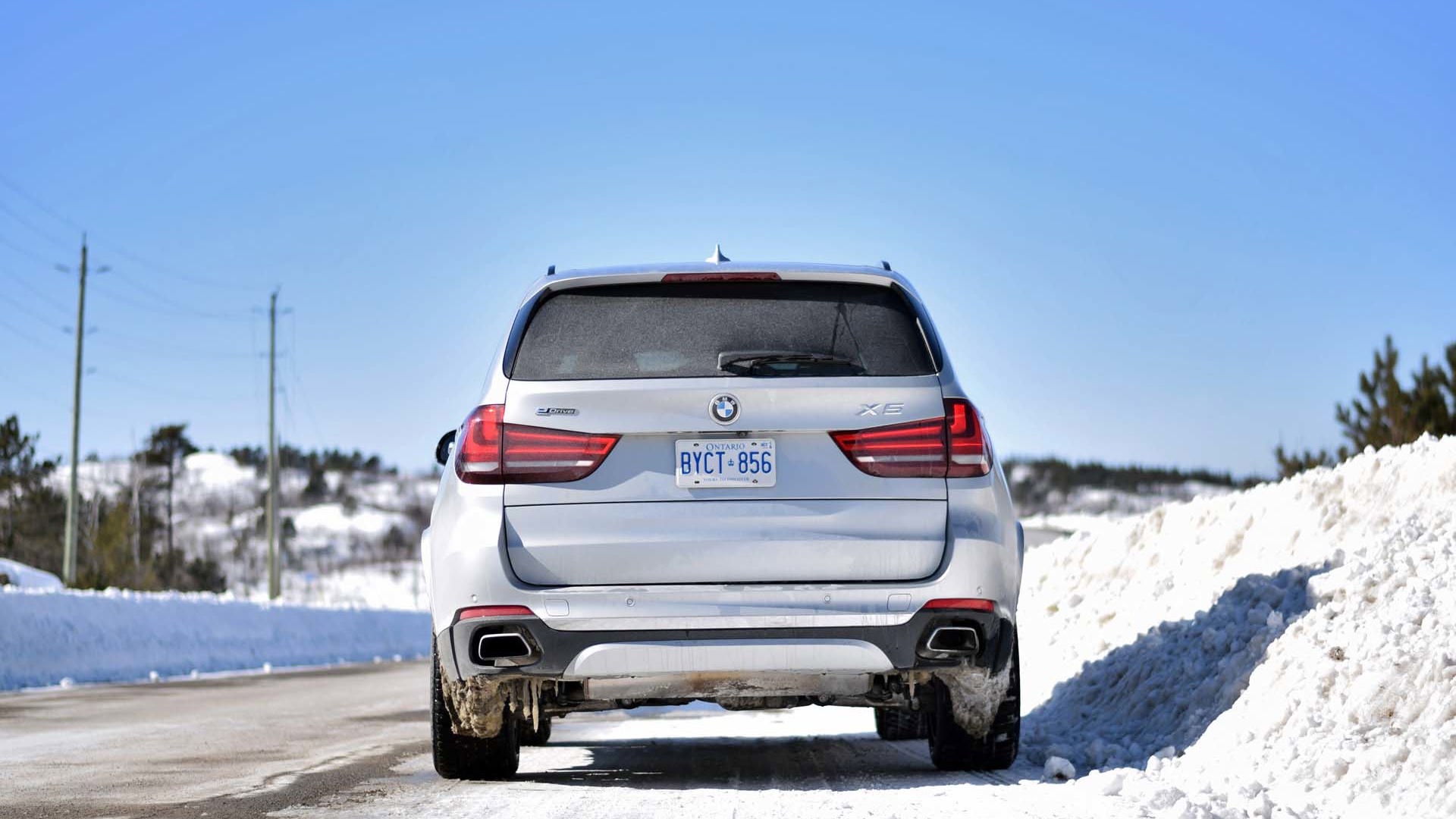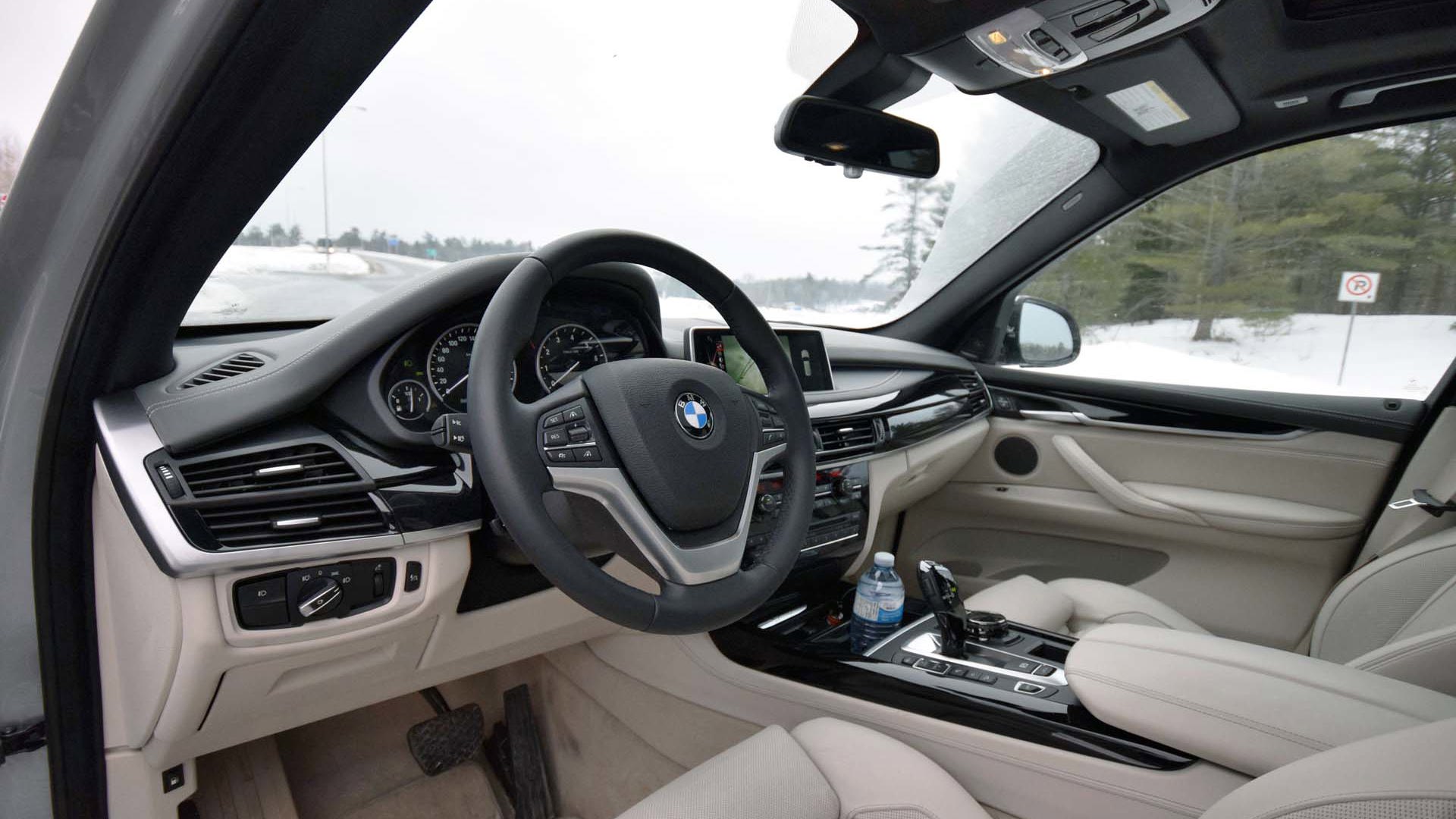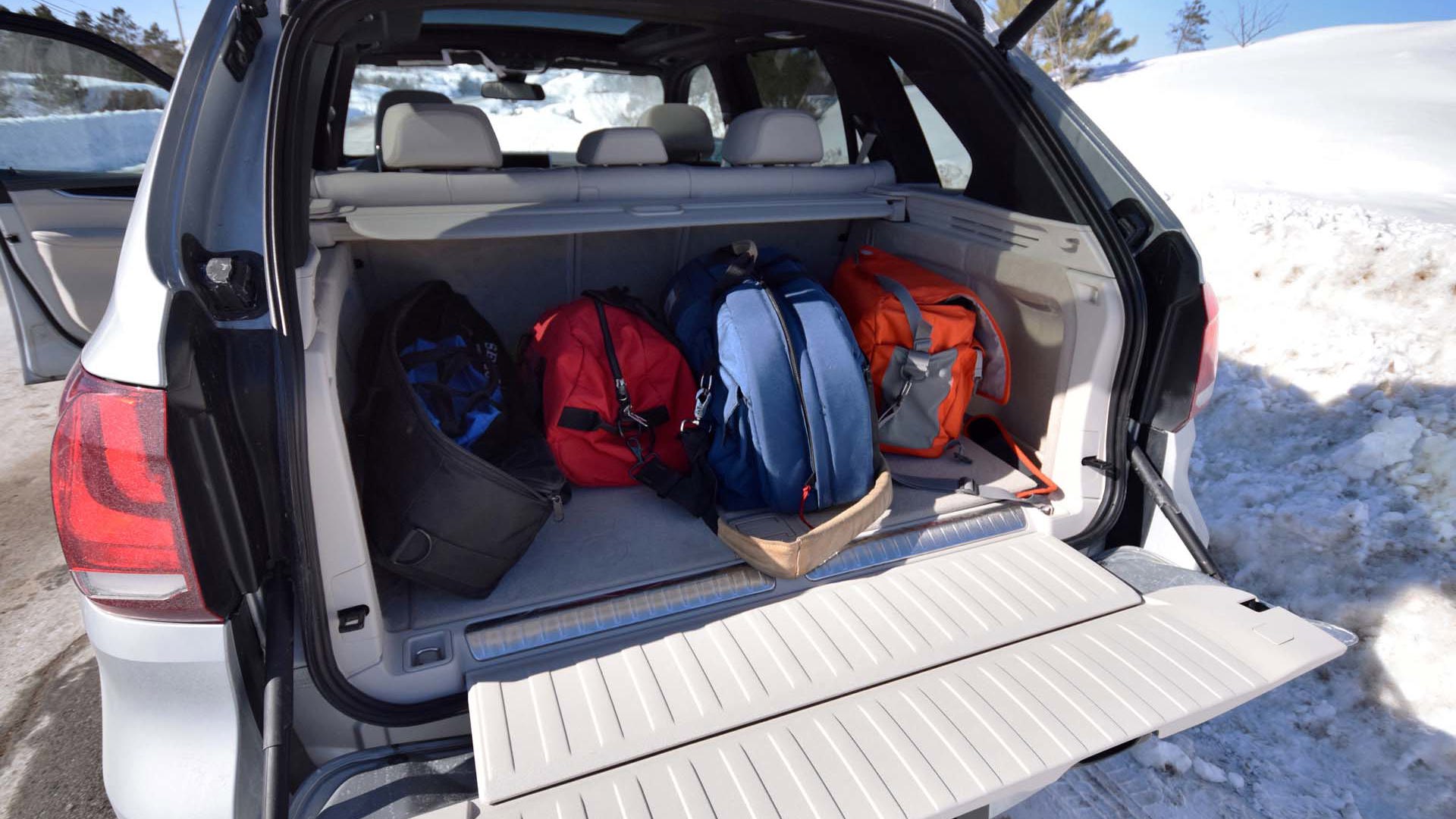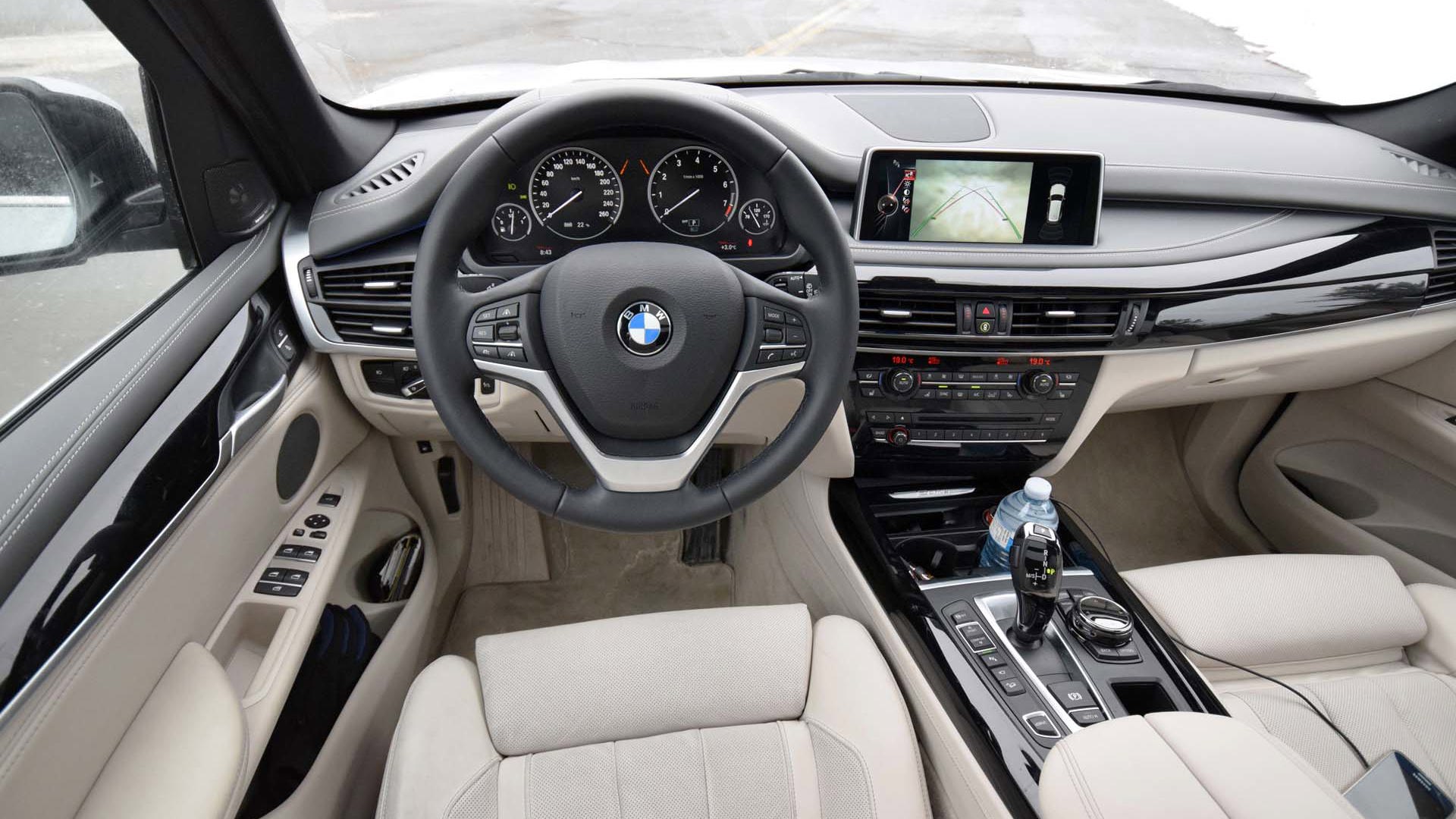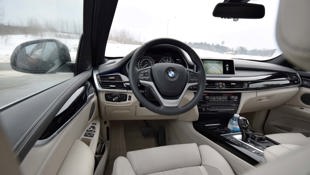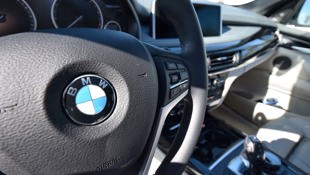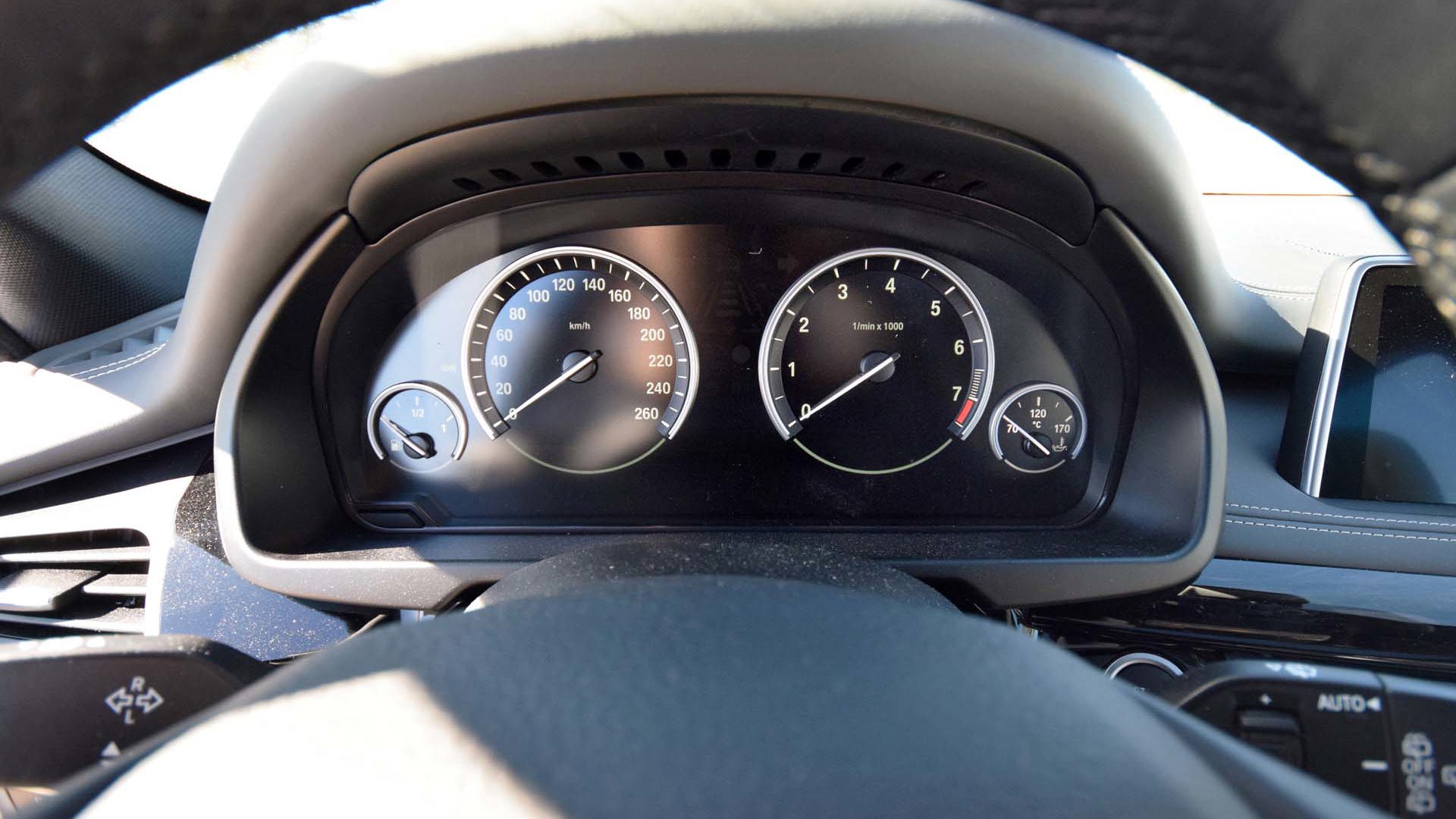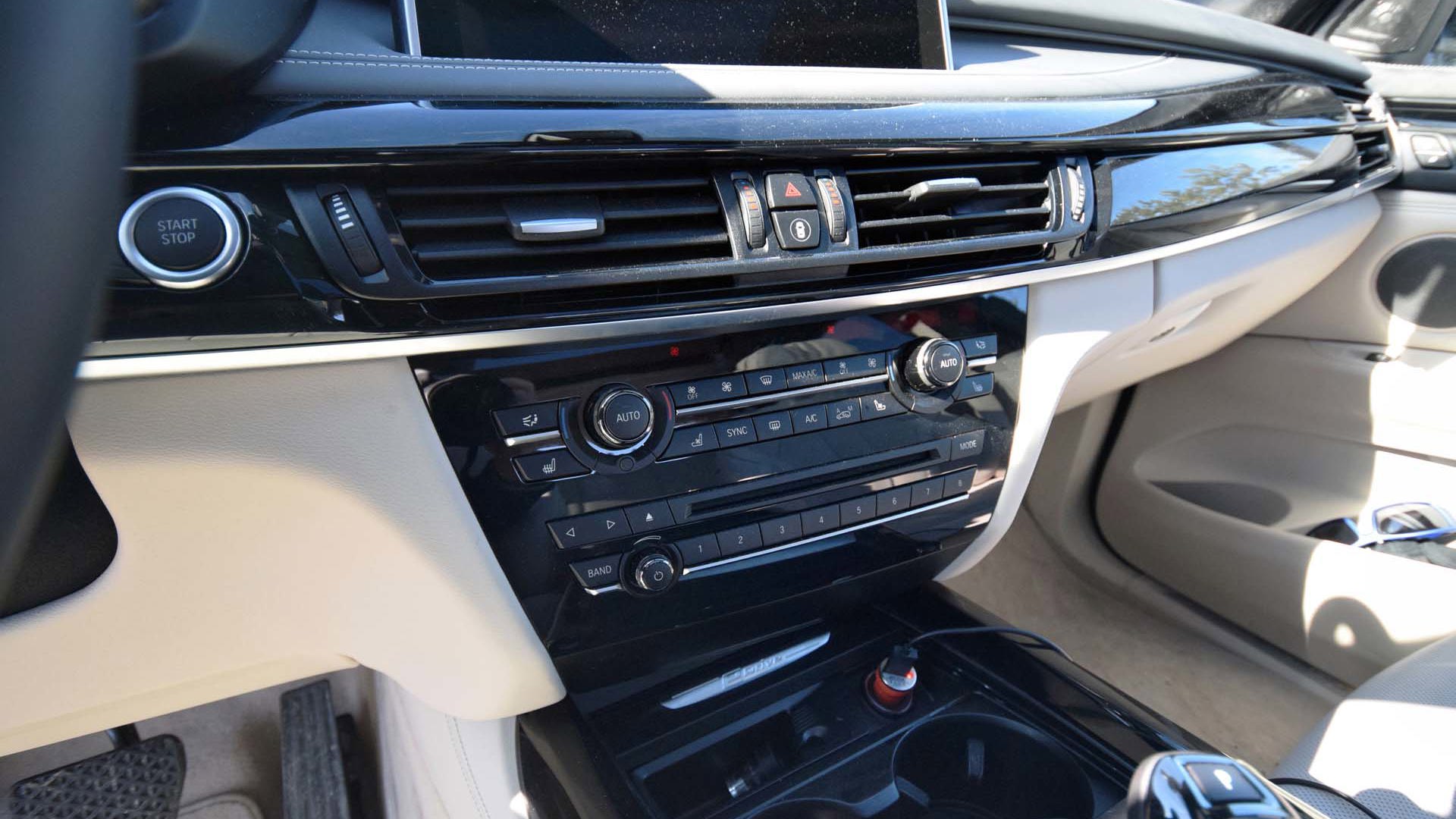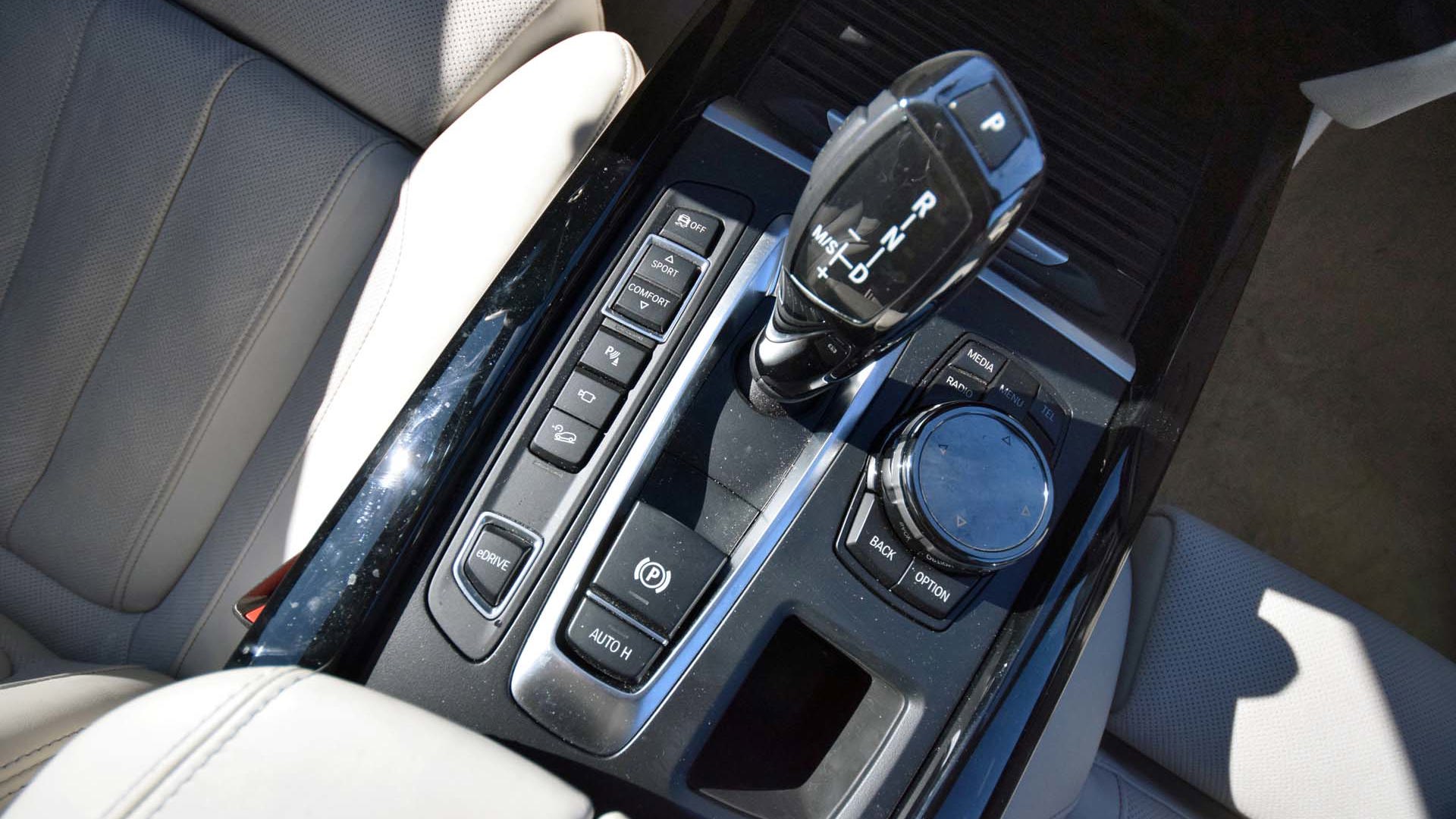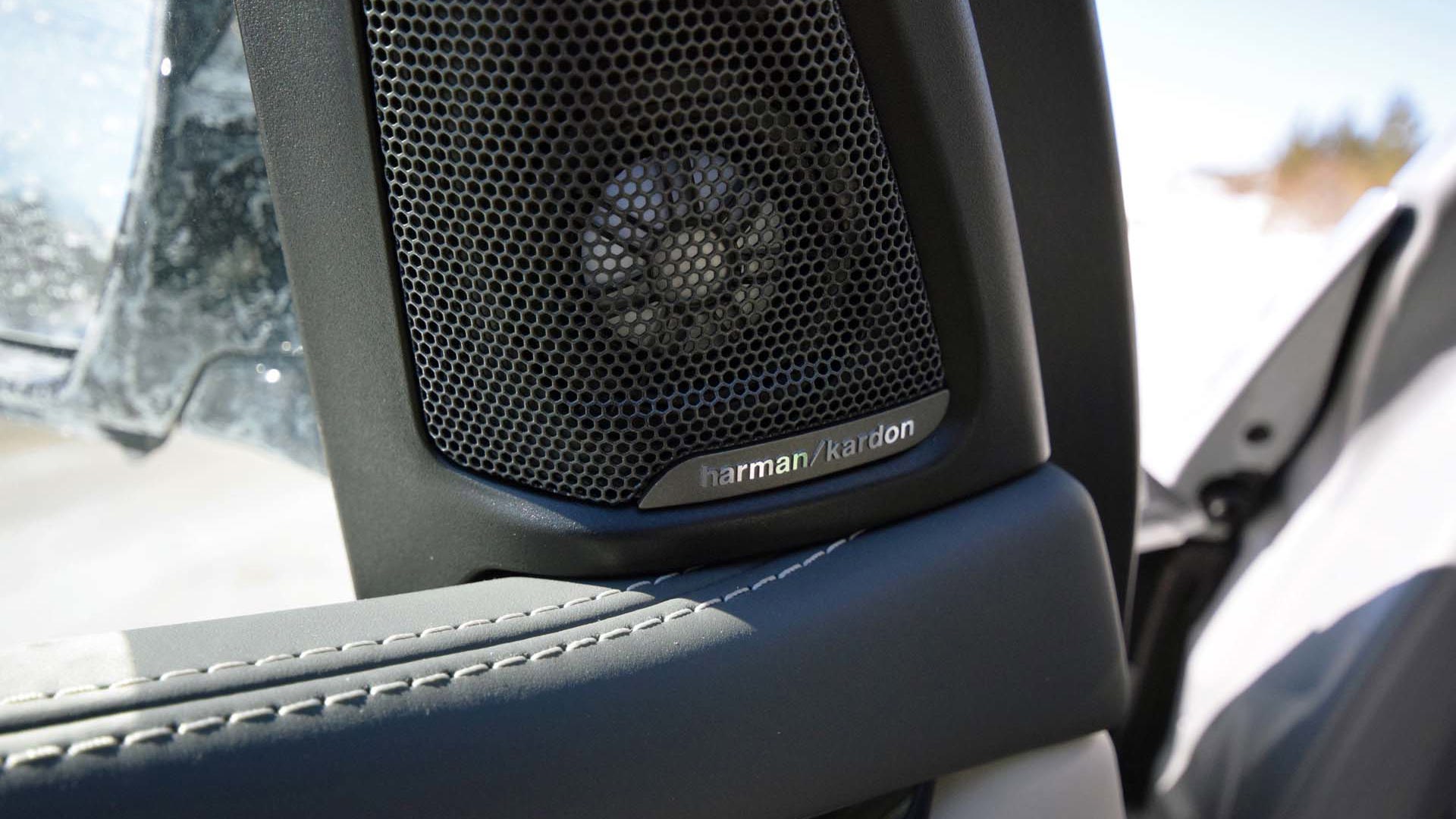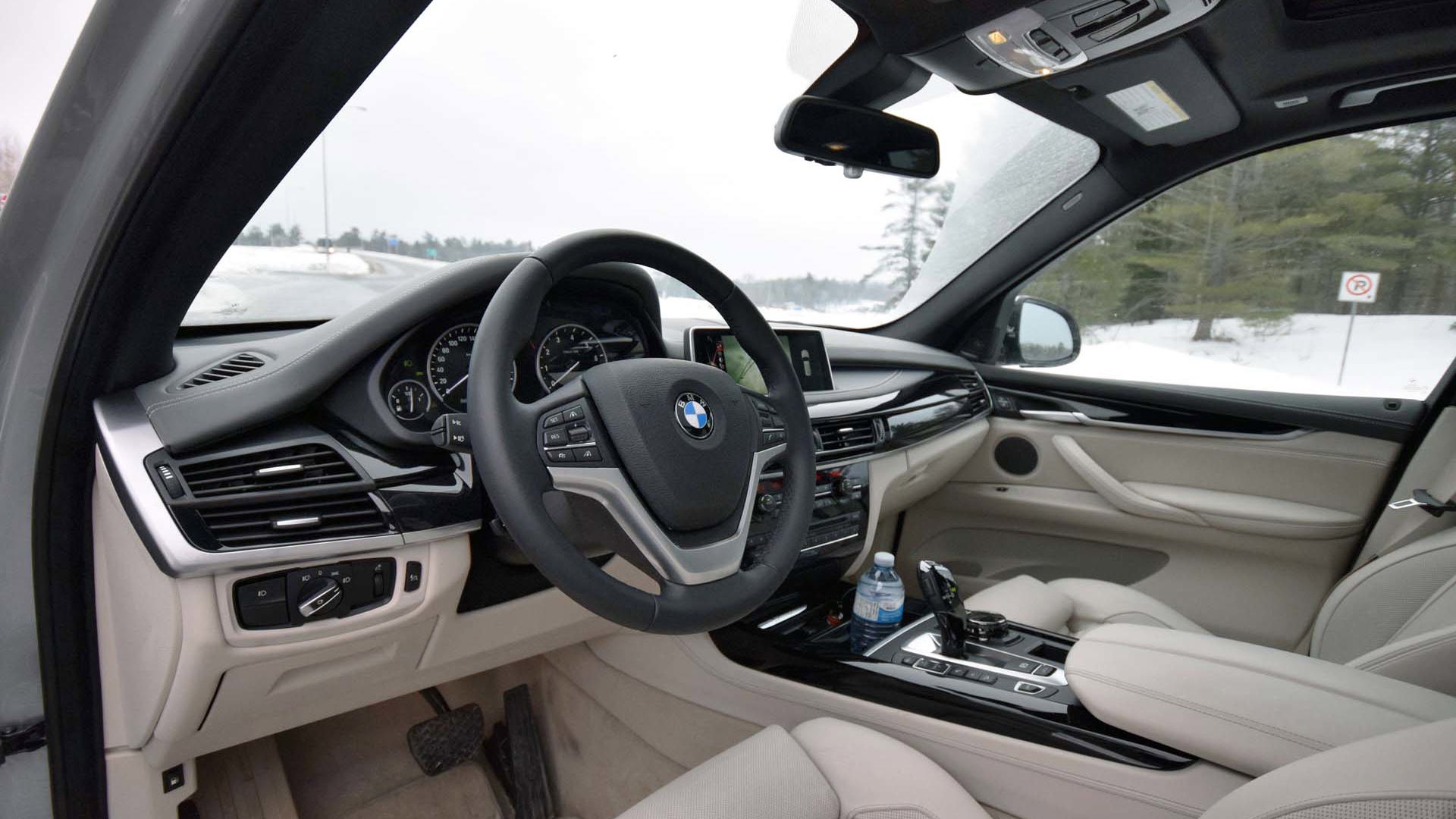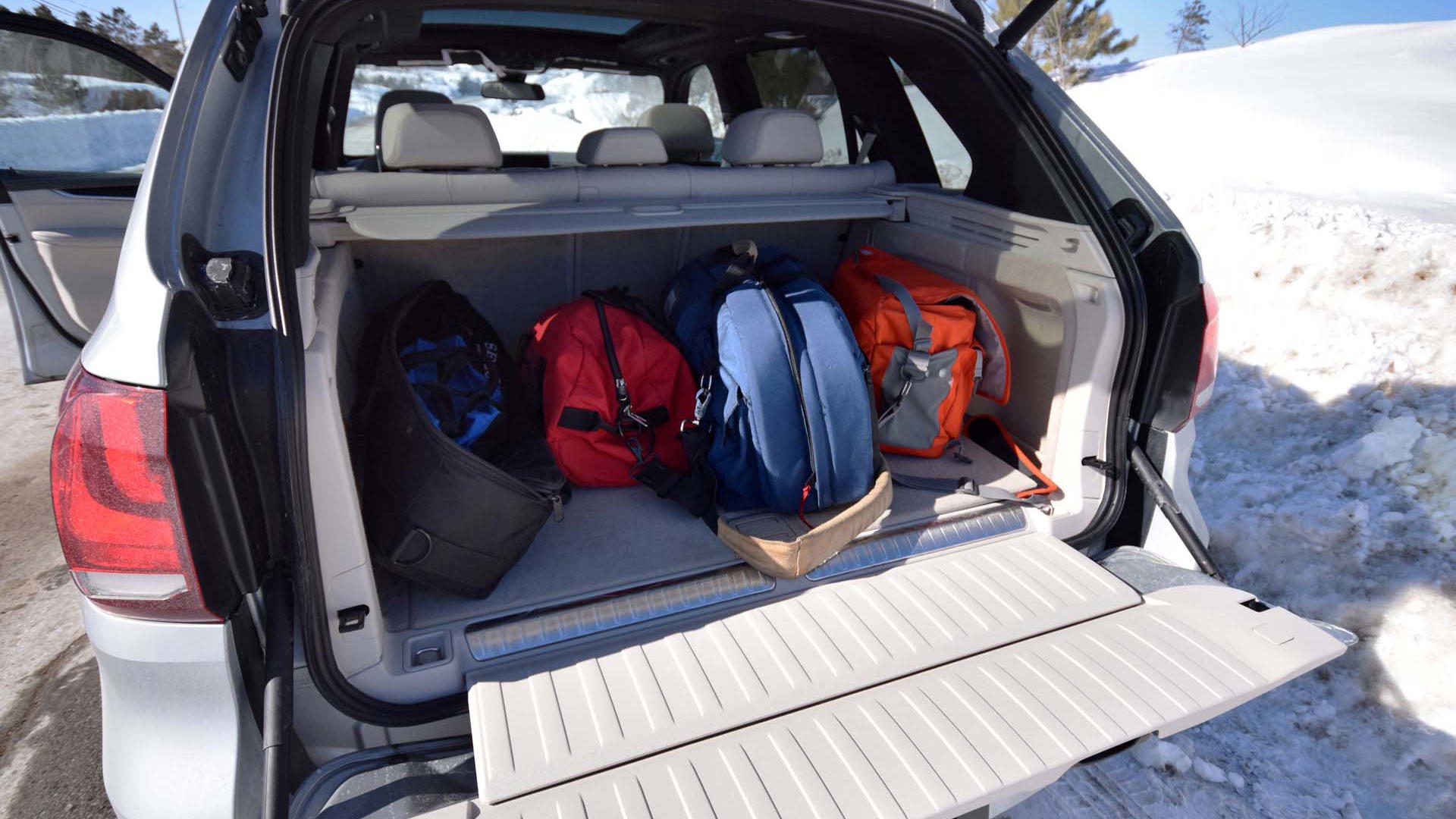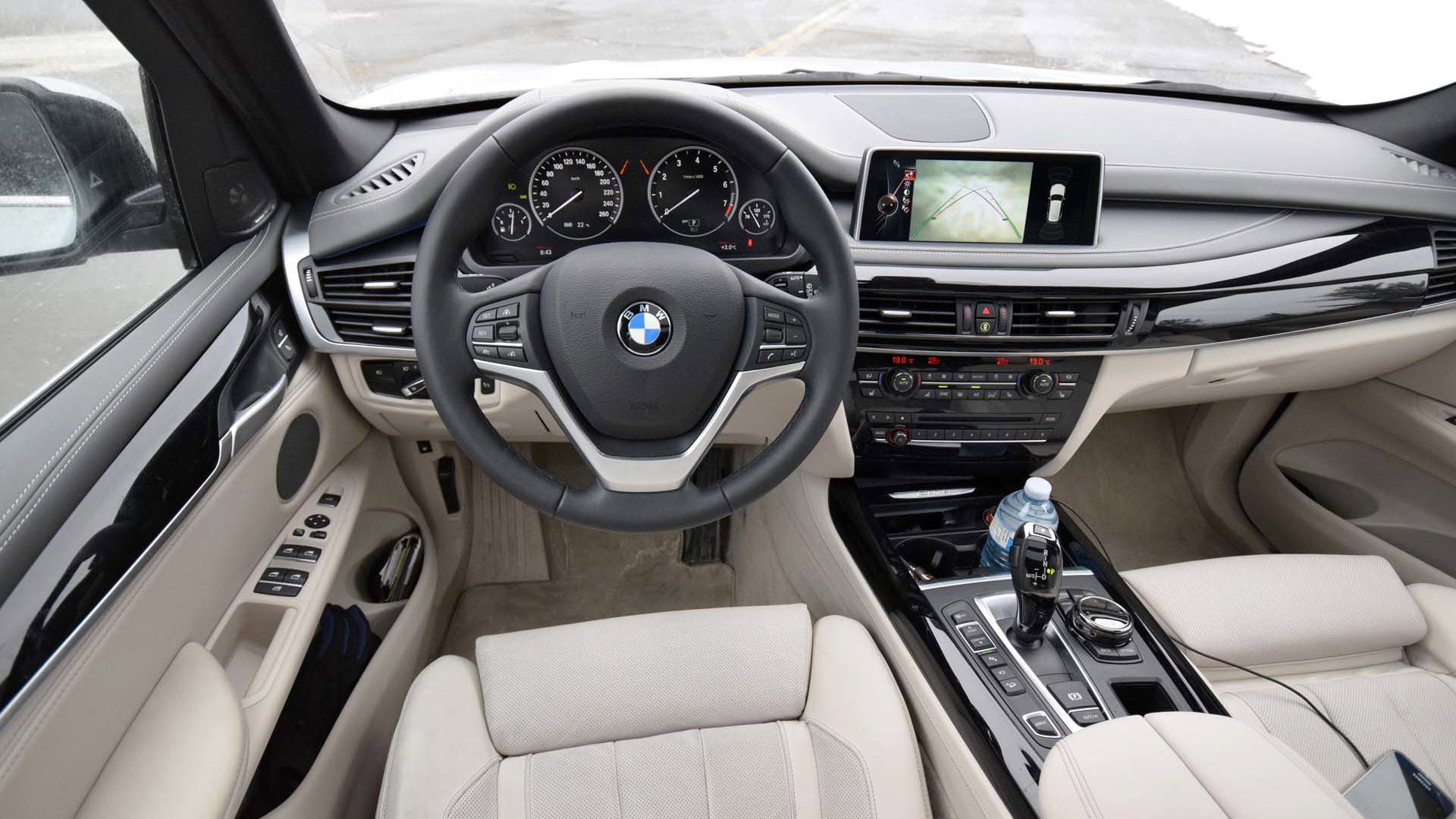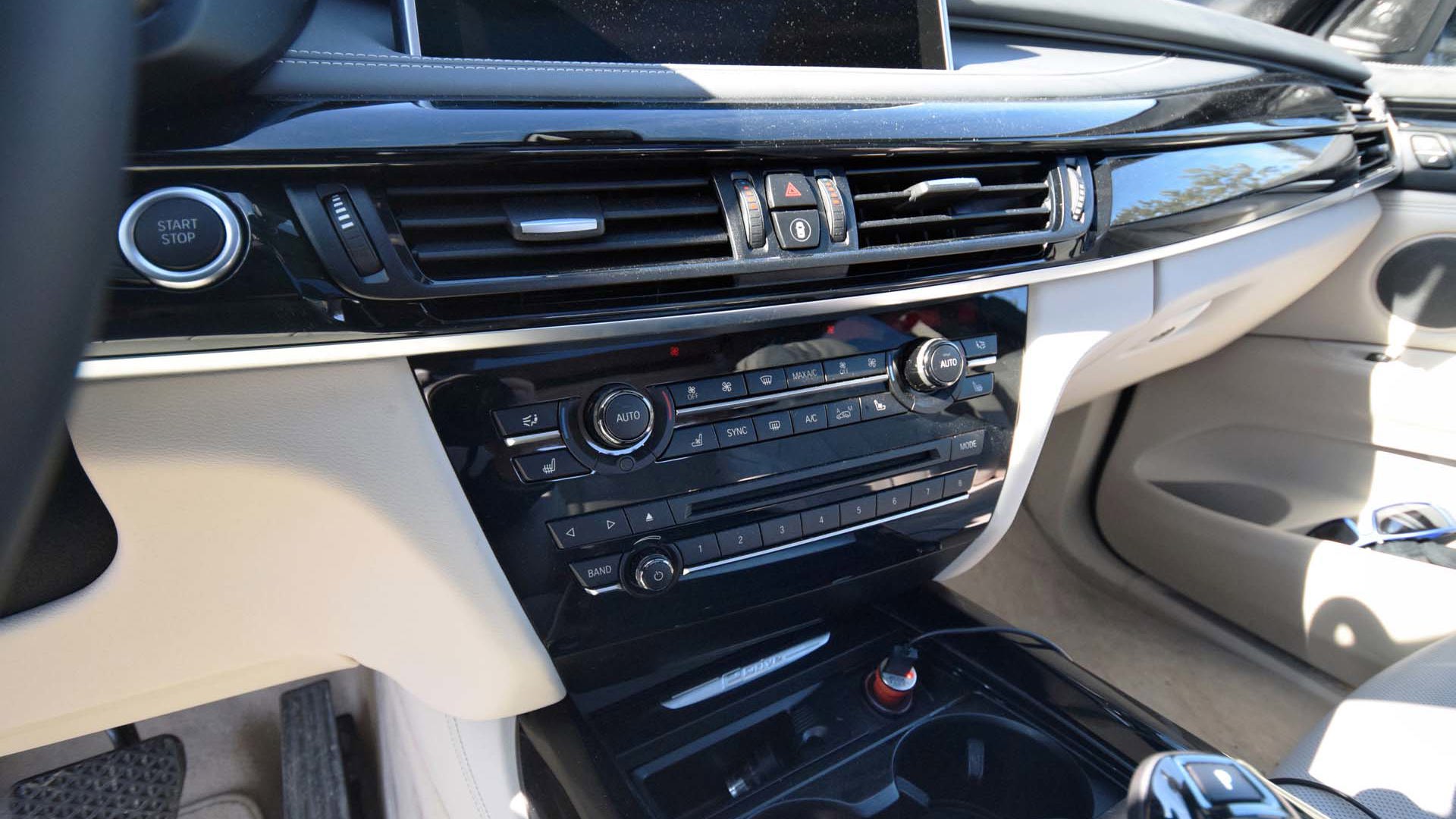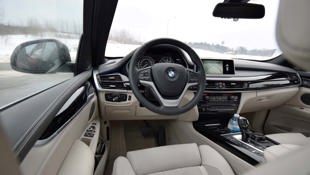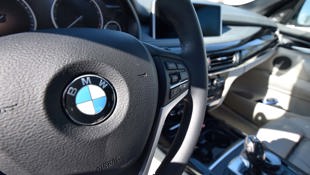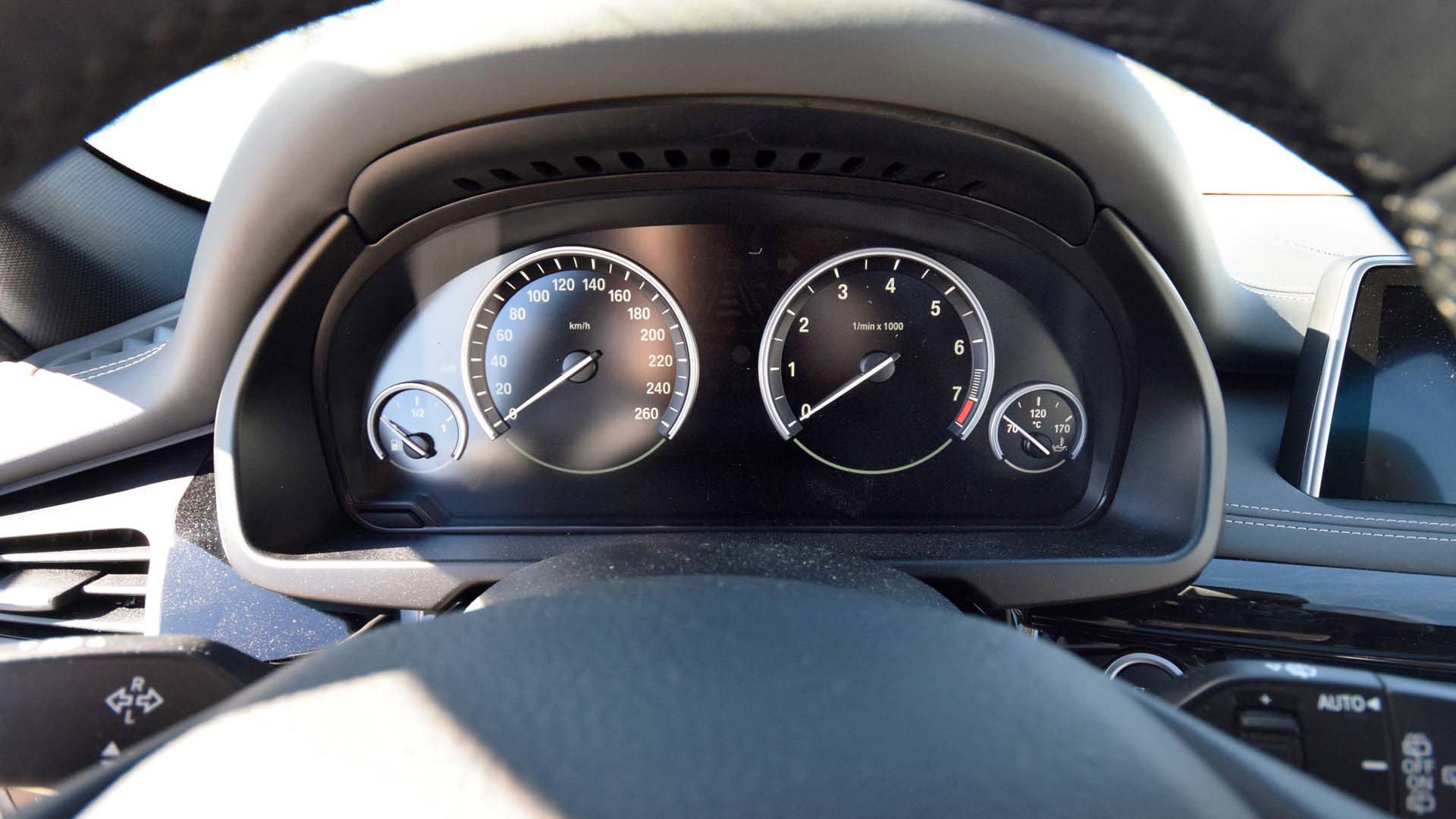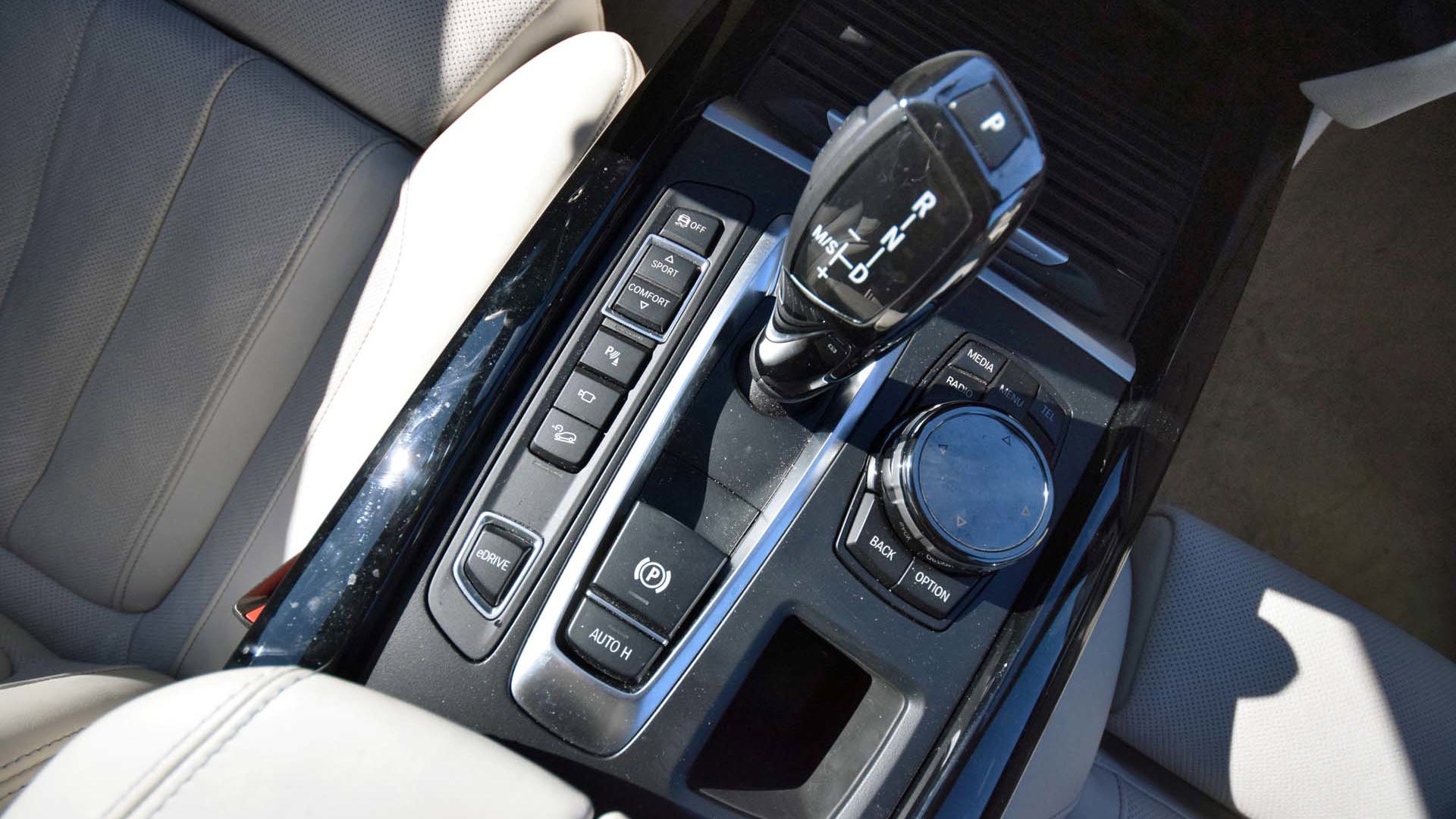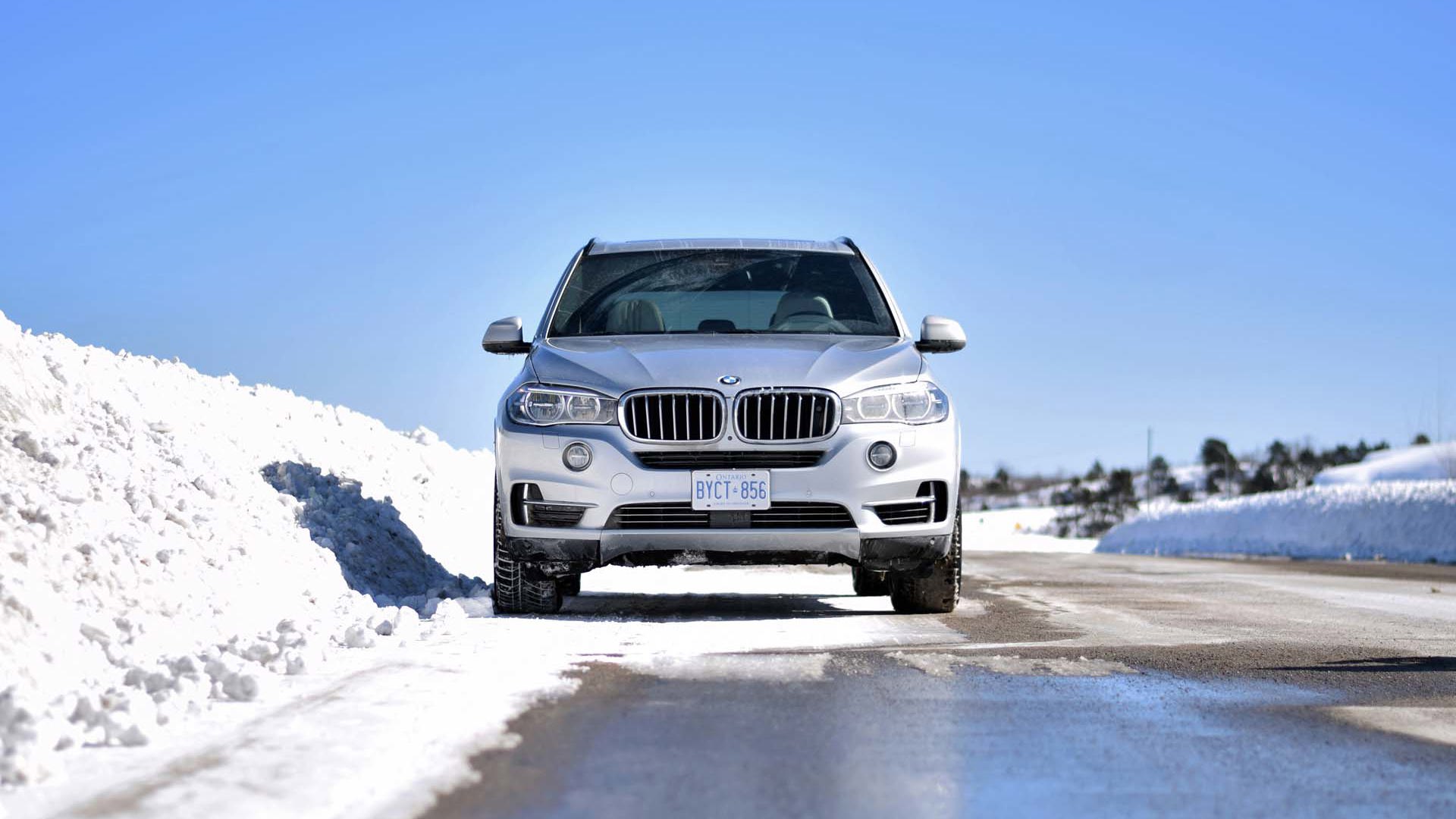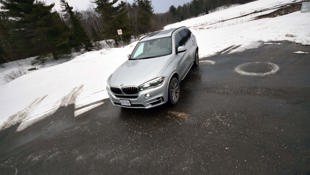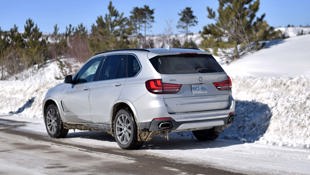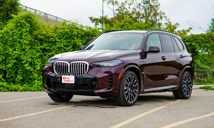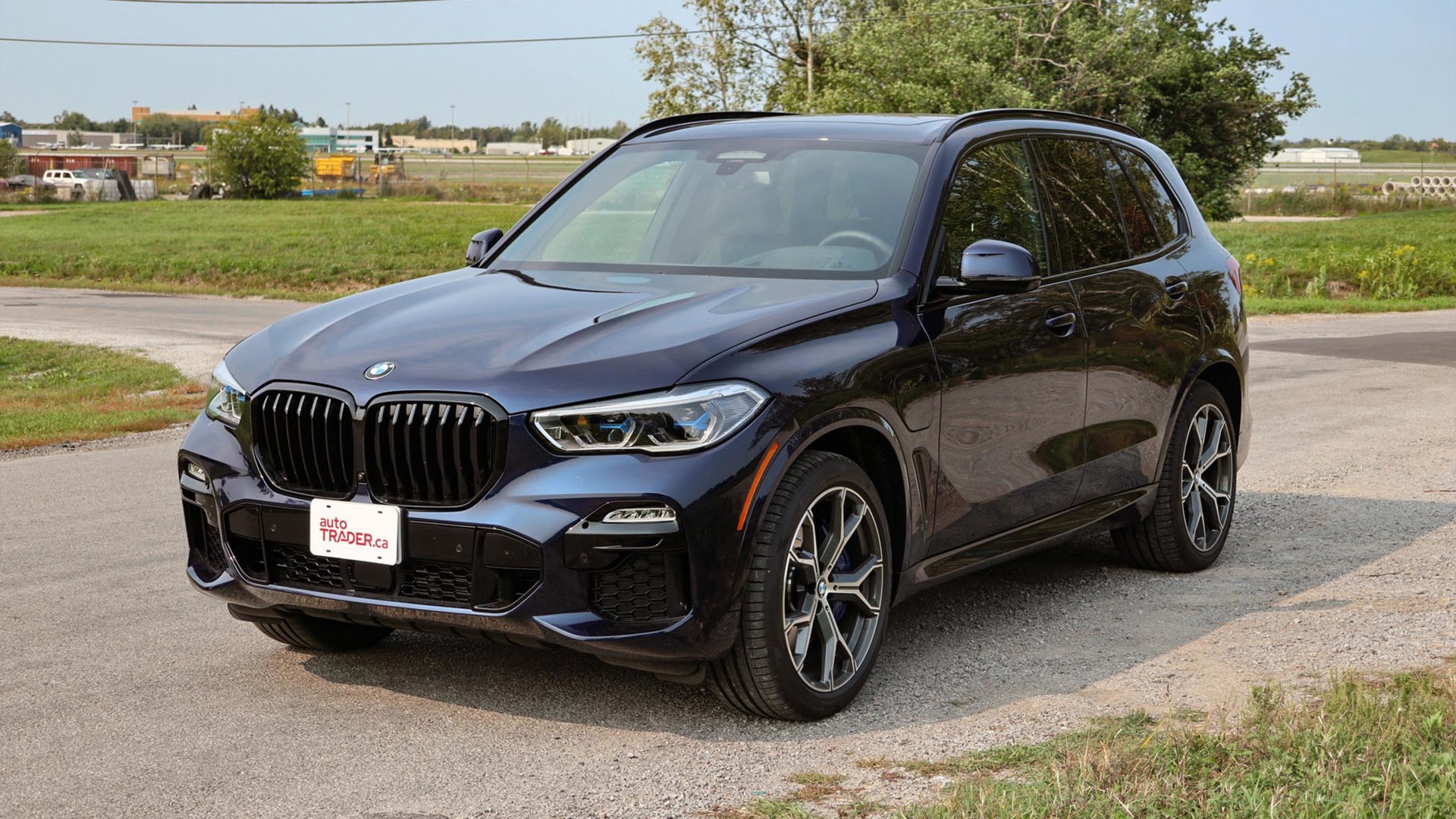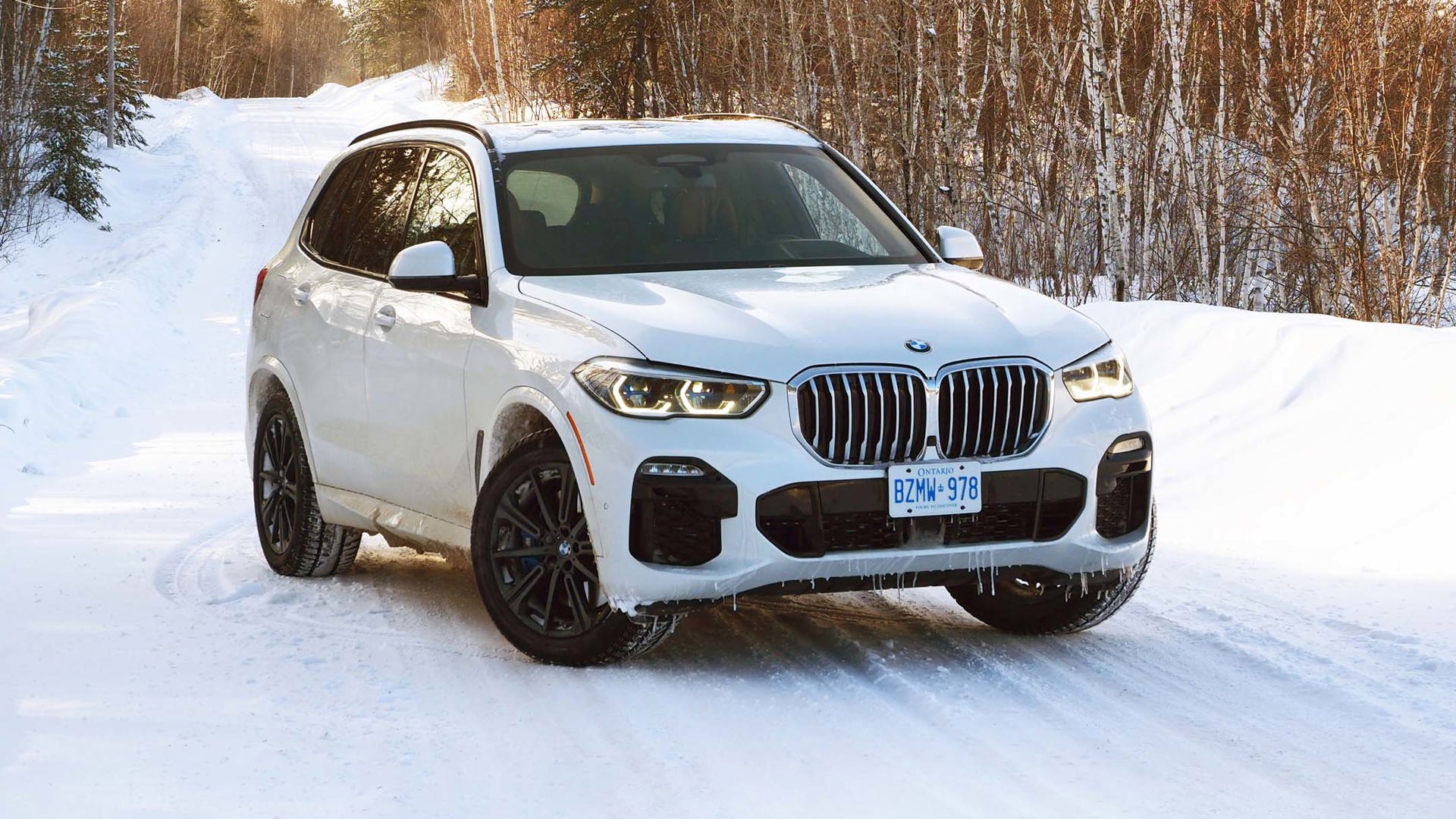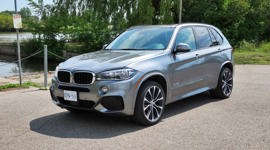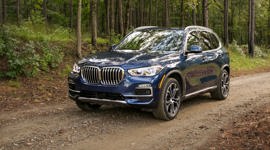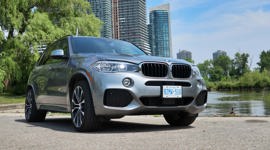 AutoTrader SCORE
AutoTrader SCORE
-
EXTERIOR STYLING8/10
-
INTERIOR8/10
-
PERFORMANCE8/10
-
COMFORT6/10
-
FUEL ECONOMY10/10
“Is that for the block heater?”
“Couldn’t you just get a diesel?” neighbour guy asked.
Neighbour guy looked perplexed.
I was plugging the BMW X5 xDrive40e’s recharging cable into the receptacle on the front fender one night, at about 27 below.
“No, it’s partially electric. This is to recharge the battery,” I replied.
Neighbour guy perked up. He drives an F-150 EcoBoost, so I figure he’s at least slightly interested in fuel-saving tech.
“How’s that work?” he asked. “Is it a hybrid?”
Given the extreme cold, and my armful of delicious groceries, I tried to whip up the simplest explanation I could find.
I explained how this particular X5 variant worked like a hybrid by combining, or switching between, gasoline and electric power for propulsion depending on the situation. And that unlike many hybrids, this one could be plugged into the same 110-volt outlet I use for my Christmas lights, to supercharge the battery with surplus juice that delivers about 20 kilometres of gas-free driving per charge at up to 120 km/h. Non plug-in hybrids typically go a tenth of that, and only at low speeds, and only under very light throttle.
In a normal hybrid, power is constantly flowing in and out of the battery. It assists the engine, and is replenished by regenerative braking, and the gas engine’s operation, when it’s running. Electrons stream to and fro and charge levels go up and down, constantly. But the battery never builds enough excess charge to sustain the vehicle for long periods. Battery chemistry is at play, too.
I told neighbour guy that you plug in a hybrid like this one to ‘top up’ the battery, providing additional EV range and reducing fuel use.
“That sounds pretty complicated,” he replied.
Indeed it is. And I hadn’t even explained about the various selectable modes from BMW’s eDrive system, which allows drivers to dispatch the surplus charge however they like. The MAX eDrive mode locks the vehicle into electric-only mode, the AUTO eDrive function runs things like a standard hybrid, albeit with longer gas-free driving periods, and the SAVE mode locks the surplus driving charge in for use later on your voyage.
“Couldn’t you just get a diesel?” neighbour guy asked.
“Sure. Or two gas engines—a six or eight cylinder, turbocharged,” I replied.
I see neighbour guys’ point. The diesel will trim fuel consumption too, and it doesn’t have a complicated transmission with an electric motor-generator inside of it, or a battery pack hidden beneath its rear cargo floor.
Diesel is easy. Simple. Well-known. Partial-electric BMW’s? Not so much.
So, why the plug-in, then? Choices. Shoppers want them, and brands are best to deliver. I explained to neighbour guy how someone at BMW once told me that the shopper, not the automaker, decides which advanced fuel saving tech “wins” in the marketplace. Toyota is all about hybrids. Volkswagen is (was?) all about diesels. But BMW, and other brands like them, figure it’s best to cover all of the bases. Virtually whichever technology shoppers believe in, and whichever technology ultimately becomes the market’s go-to, is on offer. Just in case.
“Is it fast?” he asked.
“Oh gosh, yea. It goes like the wind.” I smirked.
That’s in spite of the tester’s 2-litre turbo four-cylinder which only tells part of the story. Alone, it makes 245 horsepower. The electric motor, which resides inside of the transmission, makes 95 more, backed by the better part of 200 lb-ft of torque. All added up, drivers get 313 horses, and 332 lb-ft of torque. And since a good slab of that torque figure is created by the electric motor, it’s available, in full, at every RPM.
Best of all is how that torque is used: filling in before the turbocharger gets working, to increase throttle response. Forget lag. Hit the throttle, and the X5 leaps ahead, the electric torque flinging the machine along until the turbo gets into action, and beyond. Throttle response is instant, the torque is massive, and you’d almost never know it was turbocharged. It feels not unlike the BMW i8 when prodded: throttle response is absolutely instant and breathtaking. So, here’s a high-efficiency driveline that’ll get the X5 past a transport truck nearly as quickly as you can get your boot to the mat, and one that’s remarkably eager to whiz through city traffic with the slightest touch on the throttle.
“So, how is it on fuel?” asked neighbour guy.
“It’s like a smaller crossover,” I told him. On my watch, including nightly recharging of the battery, I was able to handle most daily errands using virtually no gas. Most fuel burned was on the highway, where the X5’s gas engine spends the majority of its time at about 1,500 RPM, if it’s running at all. All said, in far less than ideal conditions (including two snowstorms and 3 days stuck in a polar vortex at 25 to 30 below), I drove 2,125 clicks and used 213 litres of fuel. That’s 10 L/100km, or about the same as a (much smaller and less powerful) Subaru Crosstrek. Your results will vary. In my custody, in the dead of a Northern Ontario winter, a machine this big and heavy and capable and powerful typically uses 5 or 6 L/100km more.
And from the driver’s seat, even trying to emerge victorious from a nasty bit of blizzard driving through Point au Baril one afternoon, there’s little to tell you you’re in a machine with so much happening underneath. Focusing on the road ahead, you hardly notice that the tachometer is reading 0 RPM, that the battery is discharging to sustain the vehicle at about 80 km/h, and that the heater fan has slightly decreased its output to help reserve more electrons for propulsion.
It’s typical BMW X5 when you’re driving through a surprise blizzard with no visible pavement: heavy steering that’s locked on, the xDrive AWD processing the road’s surface on an inch-by-inch basis, and the overall feeling like you’re piloting something that weighs as much as a shopping mall, and won’t be easily convinced away from the direction you’re pointing it in. In simple terms? She’s a fricken tank, fellas.
In typical BMW fashion, the steering and suspension feel expertly balanced against one another. Of all the big luxury utes I’ve driven on this stretch of highway in inclement weather, this tester was at or near the top in terms of having its ride and handling equation fully sorted out. Even rolling on 20-inch wheels, the tester took surprisingly well to rougher roads too, with only the very nastiest surfaces coaxing any discomfort or unwanted sound from beneath.
“Does it feel different to drive?” was neighbour guy’s next inquiry.
You do become keenly aware of the presence and absence of a little noise and vibration, from the switching of the gas engine on and off, at times. There’s the odd squirm or squiggle from beneath the x40 eDrive as propulsion sources are blended and switched. But mostly, the process is about the smoothest I’ve ever seen, and will prove largely undetectable to most.
So, this X5 feels bang-on, particularly on the highway, and particularly in nasty weather. Shoppers coming out of a previous X5 and considering the new eDrive model will feel right at home, and especially when the going gets greasy. Note that the AWD system works in both electric and gas drive modes, without compromise.
Nasty winter driving conditions are also where my main gripe became apparent.
When it’s really cold, like 35 below, the small engine, which often turns off, combined with the great big cabin, means that drivers are best advised to bundle up a little. Cruising at speed or around town in extreme cold, in the dark, with the engine spinning at 1,500 RPM, the coolant temperature gauge never leaves the ‘cold’ position. When its Northern Ontario freezing outside, this partial electric ute’s gas engine just doesn’t get hot enough to heat the cabin in any kind of rush. You won’t freeze, but you definitely won’t be toasty warm, either. Watching the engine turn off while you’ve had the automatic climate control pegged at MAX for the past 20 minutes with your giant winter hat on can be charmingly frustrating. And, at these temperatures, the output from the supplemental electric heater is scarcely more powerful than your own breath.
On the other hand, you can pre-program the plug-in X5 to heat its cabin up on grid power, before your arrival, by entering your anticipated departure time into the system the night before. But at 30 below or worse, that heat disappears quickly.
“Maybe it’s not built for weather like this, or something,” neighbour guy said. Maybe so, maybe no. The X5 xDrive40e performs beautifully in the winter, despite its heater system, when its super-duper chilly.
Small prices to pay, for some, for a 311 horsepower, full-function, AWD SUV (sorry, Sports Activity Vehicle, says BMW), that goes like stink, and gets mileage like a much smaller machine. For X5 confidence, pleasing performance and the promise of cutting-edge tech delivering small fuel bills and extra green motoring, it should hit the mark.
Speaking of green, upon finally getting my groceries in from the cold, I realized that neighbour guy now owes me a head of romaine. Turns out, lettuce doesn’t particularly like extreme cold, either.
| Warranty: 4 years/80,000 km; 4 years/80,000 km powertrain; 12 years/unlimited distance corrosion perforation; 4 years/unlimited distance roadside assistance Competitors: |
| Model Tested | 2016 BMW X5 xDrive40e |
|---|---|
| Base Price | $74,606 |
| A/C Tax | $100 |
| Destination Fee | $2,095 |
| Price as Tested | $99,476 |
|
Optional Equipment
Premium Package ($6,300), Premium Seating Package ($2,900), Running Boards ($800), Ceramic Controls ($575), Headlight Washers ($300), Rear Entertainment System ($1,950), Convenience Phone System ($600), Night Vision ($2,500), Speed Limit Info ($350), Anthracite Roof Liner ($500), 20-inch wheels ($500), Piano Black Wood Trim ($1,000), LED Lighting Package ($2,500), Driving Assistant + (1,900)
|
|
